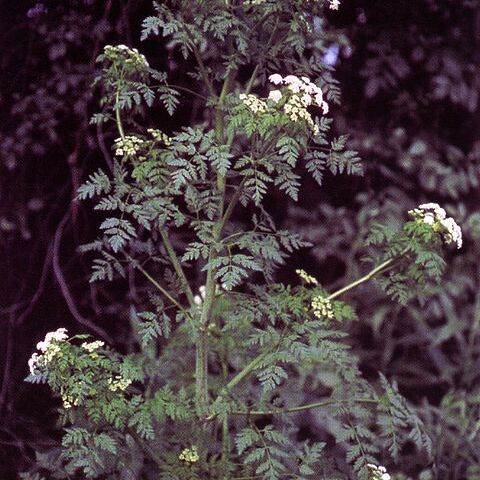Fr broadly ovoid, flattened laterally, barely constricted at the commissure; ribs 5 per mericarp, prominent, often undulate; oil-tubes very small and numerous; carpophore entire; umbels numerous, mostly terminal, often 2–4 together from the uppermost node of the stem; bracts few, ovate to lanceolate; rays numerous; bractlets like the bracts but smaller; sep none; pet white; stylopodium depressed-conic; biennials with large, pinnately decompound lvs. 4, temp. Eurasia, S. Afr.
Glabrous, annual or biennial herb. Lvs 2-4-pinnate; segments broad. Umbels compound, pedunculate; bracts and bracteoles few, entire. Petals white, regular, with entire, obtuse, shortly inflexed apex; calyx teeth 0. Fr. ovoid to subglobose, flattened laterally, not beaked, spineless; commissure narrow; ribs 5 per mericarp, equal, prominent and usually undulate; vittae 0.
Glabrous, biennial herbs up to 2 m. Leaves compound-pinnately divided, with rather fine ultimate segments.
Umbels compound, with well-developed bracts and bracteoles, which are sometimes semi-caducous.
Fruit ovoid to suborbicular, somewhat laterally compressed, with a fairly narrow commissure.
Mericarps with prominent ribs, which are often undulate; vittae 0.
Petals white, usually with a slightly inflexed apex.
Stylopodium depressed; styles short and recurved.
Calyx teeth obsolete.

